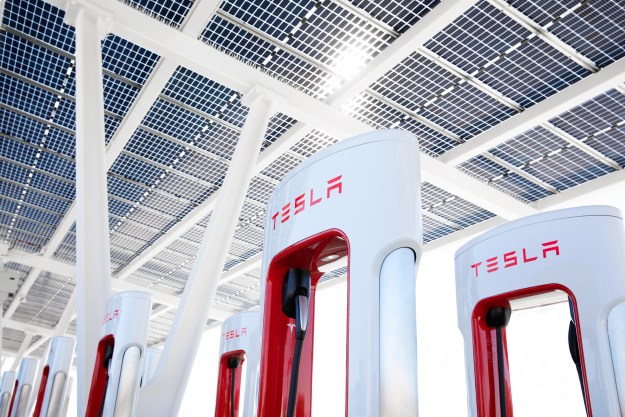
Posting on the Tesla Motors Club forum, Tesla owners in Southern California report that a handful of supercharger stations are now staffed with attendants that work until 6:00 pm daily. If all of the charging stalls at a particular location are occupied, the attendants will take your keys and charge your car as soon as a stall opens up. This makes the supercharging process more convenient because Tesla drivers no longer have to patiently wait in their car for a chance to top up their battery pack. The valet service is free, and the attendants don’t ask for a tip.
Tesla explains that it’s dedicated to continuously expanding and improving the supercharger network, but it denies having launched a valet service. Speaking to Digital Trends, a company spokesperson acknowledged that the attendants work at the busiest supercharger stations during peak times, seven days a week, “to help ensure a positive charging experience and manage onsite demand.” However, the spokesperson stressed that the attendants aren’t valets, and they’re not supposed to drive the cars or even take the keys.
Valet or no valet, it sounds like supercharging your Model S or your Model X just got a whole lot more user-friendly. And that’s good news for the scores of motorists who just put down a deposit for the all-new Model 3.
The future nonetheless looks a bit bleak for the attendants who work at Tesla’s supercharger stations. The California-based firm is currently developing an experimental snake-like charger that’s capable of plugging into a Model S without any human input. Paired with Summon, a feature that allows the Model S to enter or exit a parking spot autonomously (and assuming Tesla builds more stations), the snake-like prototype promises to make the attendants who work at the supercharger stations obsolete.
Editors' Recommendations
- Tech giant reveals nice price for new EV to take on Tesla
- Here’s how Ford will give EV customers Tesla Supercharger access
- Tesla reveals target date for new electric vehicle launch
- Ford and GM EV drivers will be able to charge at Tesla Superchargers in February
- Watch Tesla’s new promo video showing off the Cybertruck




